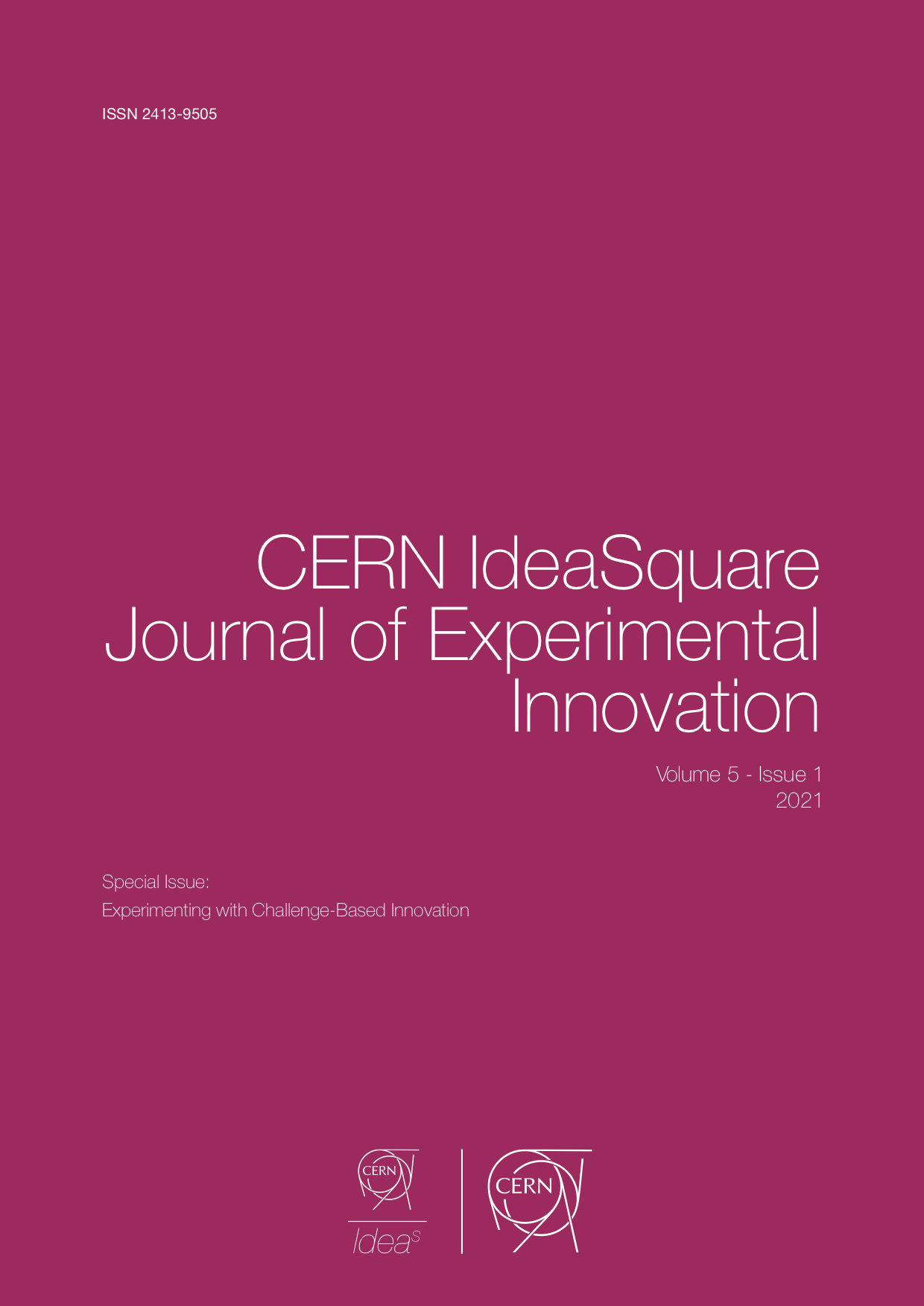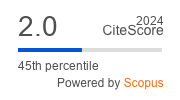Fostering learning with challenge-based innovation in higher education: case CERN Bootcamp
DOI:
https://doi.org/10.23726/cij.2021.1278Keywords:
CBI Challenge-based innovation, higher education, service design, design thinking, significant learning, CERN BootcampAbstract
This article presents findings on learning with challenge-based innovation (CBI) in higher education. It describes how different dimensions of Significant Learning are enhanced with challenge-based innovation among multidisciplinary students in higher education. It is based on a case study on designing and implementing a master’s-level course for learning service design by solving societal challenges related to United Nations’ sustainable development goals (SDG) with challenge-based innovation at CERN IdeaSquare. As a result, this article describes how the case CBI enhances Significant Learning, and what is critical for instructors and organizers of challenge-based innovation.
References
Albinsson, P. A., Burman, B., Shows, G. D., & Stoddard, J. E. (2020). Integrating and assessing student perceived sustainability literacy in an Integrated Marketing Communications course. Marketing Education Review, 30(3), pp. 159-176.
Anderson, S., Nasr, L., and Rayburn, S. W. (2018), “Transformative service research and service design: synergistic effects in healthcare”, The Service Industries Journal, 38(1-2), pp. 99-113.
Andreassen, T. W., Kristensson, P., Lervik-Olsen, L., Parasuraman, A., McColl-Kennedy, J. R., Edvardsson, B., and Colurcio, M. (2016), “Linking service design to value creation and service research”, Journal of Service Management, 27(1), pp. 21-29.
Antons, D. and Breidbach, C.F. (2018), “Big data, big insights? Advancing service innovation and design with machine learning”, Journal of Service Research, 21(1), pp. 17-39.
Bailey, S.G. (2012), “Embedding service design: the long and the short of it”, In ServDes. 2012 Conference Proceedings Co-Creating Services; The 3rd Service Design and Service Innovation Conference; 8-10 February; Espoo; Finland. Linköping University Electronic Press, Linköpings universitet, pp. 31-41.
Bitner, M. J. (1990), “Evaluating service encounters: The effects of physical surroundings and employee responses”, Journal of Marketing, 54(2), pp. 69–82.
Barnes, M. E., & Caprino, K. (2016). Analyzing service-learning reflections through Fink's taxonomy. Teaching in Higher Education, 21(5), pp. 557-575.
Benvenuti, C., Sutton, C., & Wenninger, H. (2017). Knowledge and Technology: Sharing With Society. In Technology Meets Research: 60 Years of CERN Technology: Selected Highlights, pp. 365-392).
Brown, T. (2008), “Design thinking”, Harvard Business Review, 86(6), pp. 84-92.
Gallagher, S. E., & Savage, T. (2020). Challenge-based learning in higher education: an exploratory literature review. Teaching in Higher Education, pp. 1-23.
Charosky, G., Leveratto, L., Hassi, L., Papageorgiou, K., Ramos-Castro, J., & Bragós, R. Challenge based education: an approach to innovation through multidisciplinary teams of students using Design Thinking. In 2018 XIII Technologies Applied to Electronics Teaching Conference (TAEE), 2018, pp. 1-8. IEEE.
Costa, N., Patrício, L., Morelli, N., & Magee, C. L. (2018). Bringing service design to manufacturing companies: integrating PSS and service design approaches. Design Studies, 55, pp. 112-145.
Design Council. (2019). Framework for innovation [Diagram]. https://www.designcouncil.org. uk/news-opinion/what-framework-innovation-design-councils-evolved-double-diamond
Eisenhardt, K. M. (1989). Building theories from case study research. Academy of management review, 14(4), pp. 532-550.
Faria, C., & Fernandes, M. (2019). A modular graphic identity solution in rebranding an educational programme. CERN IdeaSquare Journal of Experimental Innovation, 3(2), pp. 23-56.
Fink, L. D. (2013a). Creating significant learning experiences: An integrated approach to designing college courses. San Francisco, CA: Jossey-Bass.
Fink, L. D. (2003b). What Is '''significant Learning"? University of Oklahoma Significant Learning Website, Program for Instructional Innovation at the University of Oklahoma.
https://www.wcu.edu/Webfiles/PDFs/facultycenter_SignificantLearning.pdf (viewed 16 March 2016)
Goldstein, S. M., Johnston, R., Duffy, J., and Rao, J. (2002), “The service concept: the missing link in service design research?”, Journal of Operations management, 20(2), pp. 121-134.
Gummesson, E. (1991), “Qualitative methods in management research. Newbury, CA.: Sage.
Hassi, L., Ramos-Castro, J., Leveratto, L., Kurikka, J. J., Charosky, G., Utriainen, T. M., ... & Nordberg, M. Mixing design, management and engineering students in challenge-based projects. In Proceedings of the 12th International CDIO Conference., 2016, pp. 629-645.
Holmlid, S. (2007), “Interaction design and service design: Expanding a comparison of design disciplines”, Nordes, (2).
Holmlid, S., and Evenson, S. (2008), “Bringing service design to service sciences, management and engineering”, In Service science, management and engineering education for the 21st century, Springer, Boston, MA, pp. 341-345.
Kimbell, L. (2011), “Designing for service as one way of designing services”, International Journal of Design, 5( 2), pp. 41-52.
Kurikka, J. J. (2017). OBI-Developing an idea sharing platform for online collaboration and distributed student projects. CERN IdeaSquare Journal of Experimental Innovation, 1(1), p. 13.
Karpen, I. O., Gemser, G., and Calabretta, G. (2017), “A multilevel consideration of service design conditions: towards a portfolio of organizational capabilities, interactive practices and individual abilities”, Journal of Service Theory and Practice, 27(2), pp. 384-407.
Knapp, J., Zeratsky, J., & Kowitz, B. (2016). Sprint: How to solve big problems and test new ideas in just five days. Bentam Press, UK.
Kurikka, J., Utriainen, T., & Repokari, L. (2016). Challenge based innovation: translating fundamental research into societal applications. International Journal of Learning and Change, 8(3-4), pp. 278-297.
Mager, B., and Sung, T. J. D. (2011), “Special issue editorial: Designing for services”, International Journal of Design, 5(2).
Martinkenaite, I., Breunig, K. J., and Fjuk, A. (2017), “Capable design or designing capabilities? An exploration of service design as an emerging organizational capability in Telenor”, Journal of Entrepreneurship, Management and Innovation, 13(1), pp. 69-88.
Meroni, A., and Sangiorgi, D. (2011), Design for services, Gower Publishing, Ltd.
Nichols, M., Cator, K., & Torres, M. (2016). Challenge based learner user guide. Redwood City, CA: Digital Promise, pp. 24-36.
Norling, P., Edvardsson, B., Gummesson, E., 1992, Tjänsteutveckling och tjänstekonstruction. Research Report, 92:5, Service Research Center, University of Karlstad: Sweden.
Ojasalo, J. and Kaartti, V. (2019), “Intensive Multidisciplinary Learning Concept in Higher Education: Case CERN Bootcamp,” in AICBMM-AICSSE 2019 December (Cambridge) Conference Proceedings, Academic International Conference on Social Sciences and Education, 2-4 December 2019, Cambridge, UK, pp. 20-29.
Ojasalo, J. and Ojasalo, K. (2012), “Creating Competences in Service Innovation and Design,” Touchpoint, The Journal of Service Design, 3(3), pp. 58-61.
Patrício, L., Fisk, R. P., Falcão e Cunha, J., and Constantine, L. (2011), “Multilevel service design: from customer value constellation to service experience blueprinting”, Journal of service Research, 14(2), pp. 180-200.
Saco, R. M., and Goncalves, A. P. (2008), “Service design: An appraisal”, Design management review, 19 (1, pp. 10-19.
Sangiorgi, D. (2009), “Building a framework for service design research”, In 8th European Academy of Design conference (pp. 415-420). GBR.
Sangiorgi, D., Lima, F., Patrício, L., Joly, M. P., and Favini, C. (2019), “A Human-Centred, Multidisciplinary, and Transformative Approach to Service Science: A Service Design Perspective”, In Handbook of Service Science, Volume II. Springer, Cham, pp. 147-181.
Segelström, F. (2013), Stakeholder Engagement for Service Design: How Service Designers Identify and Communicate Insights, Doctoral dissertation, Linköping University Electronic Press.
Simons, H. (2009). Case study research in practice. SAGE publications.
Stickdorn, M. and Schneider, J. (2010), This is Service Design Thinking, BIS Publishers, Amsterdam.
Teixeira, J.G., Patrício, L., Huang, K. H., Fisk, R. P., Nóbrega, L., and Constantine, L. (2017), “The MINDS method: integrating management and interaction design perspectives for service design”, Journal of Service Research, 20(3), pp. 240-258.
Trischler, J., Pervan, S. J., Kelly, S. J., and Scott, D. R. (2018), “The value of codesign: The effect of customer involvement in service design teams”, Journal of Service Research, 21(1), pp. 75-100.
Wetter-Edman, K., Sangiorgi, D., Edvardsson, B., Holmlid, S., Grönroos, C., and Mattelmäki, T. (2014), “Design for value co-creation: Exploring synergies between design for service and service logic”, Service Science, 6(2), pp. 106-121.
Wolfe, K. (2020). Service design in higher education: a literature review. Perspectives: Policy and Practice in Higher Education, 24(4), pp. 121-125.
Yin, R. K. (1994), Case study research: Design and methods, Sage, Beverly Hills, CA.
Zomerdijk, L. G., and Voss, C. A. (2010), “Service design for experience-centric services”, Journal of service research, 13(1), pp. 67-82.
Downloads
Published
How to Cite
Issue
Section
Categories
License
Copyright (c) 2021 Jukka Ojasalo, Virpi Kaartti

This work is licensed under a Creative Commons Attribution 4.0 International License.
Authors who publish with this journal agree to the following terms:
- Authors retain copyright and grant the journal right of first publication with the work simultaneously licensed under a Creative Commons Attribution License that allows others to share the work with an acknowledgement of the work's authorship and initial publication in this journal.
- Authors are able to enter into separate, additional contractual arrangements for the non-exclusive distribution of the journal's published version of the work (e.g., post it to an institutional repository or publish it in a book), with an acknowledgement of its initial publication in this journal.
- Authors are permitted and encouraged to post their work online (e.g., in institutional repositories or on their website) prior to and during the submission process, as it can lead to productive exchanges, as well as earlier and greater citation of published work (See The Effect of Open Access).


